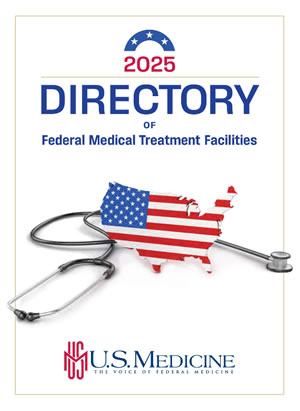Secondary Analysis of Study Using VA Data
BOSTON –While gout often is linked to diet – such as consuming too much red meat, seafood, and alcohol – it also can be a common complication of hypertension management.
In fact, according to an article in the Journal of Hypertension, gout is often listed as the reason patients are non-adherent to blood pressure therapy regimens. Yet, according to Beth Israel Deaconess Medical Center-led researchers, few studies have offered any guidance for physicians selecting antihypertensive medications for patients at risk for gout.
Using data from the Antihypertensive and Lipid-Lowering Treatment to Prevent Heart Attack Trial (ALLHAT), researchers were able to rectify that. ALLHAT, a randomized clinical trial, sought to determine the effects of first-step hypertension therapy with amlodipine, chlorthalidone, or lisinopril on fatal coronary heart disease or nonfatal myocardial infarction (1994–2002), with trial participants linked to VA and Medicare gout claims.
The secondary analysis “determined the effect of drug assignment on gout with Cox regression models. We also determined the adjusted association of self-reported atenolol use (ascertained at the 1-month visit for indications other than hypertension) with gout,” study authors explained.
Claims were linked to 23,964 participants with mean age of 69.8; 45% of those patients were women and nearly a third were African-American. Patients were from 623 medical centers in North America between 1994 and 2002.
The study noted that atenolol use was reported by 928 participants at the one-month visit. Results indicate that, over a mean follow-up of 4.9 years, 597 gout claims were documented.
Findings included that:
- Amlodipine reduced the risk of goutby 37% (hazard ratio 0.63; 95% CI 0.51–0.78) compared with chlorthalidone and by 26% (hazard ratio 0.74; 95% CI 0.58–0.94) compared with lisinopril.
- Lisinopril non-significantly lowered gout risk compared with chlorthalidone (hazard ratio 0.85; 95% CI 0.70–1.03).
- Atenolol use was not associated with gout risk (adjusted hazard ratio 1.18; 95% CI 0.78–1.80).
The researchers pointed out that gout risk reduction was primarily observed after one year of follow-up, adding, “Amlodipine lowered long-term gout risk compared with lisinopril or chlorthalidone. This finding may be useful in cases where gout risk is a principal concern among patients being treated for hypertension.”
“Our study is clinically relevant as the prevalence of gout has been rising in the United States and the number of Americans meeting newly-revised diagnostic thresholds for hypertension has doubled,” emphasized corresponding author Stephen Juraschek, MD, PhD, Assistant Professor of Medicine at BIDMC. “Our study demonstrated that amlodipine was associated with a lower risk of gout compared with chlorthalidone or lisinopril, which has never been reported prior to this study.”
Juraschek called for further research to confirm the findings, adding, “Other health outcomes, such as heart failure, should also be considered with choosing a blood pressure drug.”
- Juraschek SP, Simpson LM, Davis BR, et al. The effects of antihypertensive class on gout in older adults: secondary analysis of the Antihypertensive and Lipid-Lowering Treatment to Prevent Heart Attack Trial. J Hypertens. 2020;38(5):954‐960. doi:10.1097/HJH.0000000000002359


